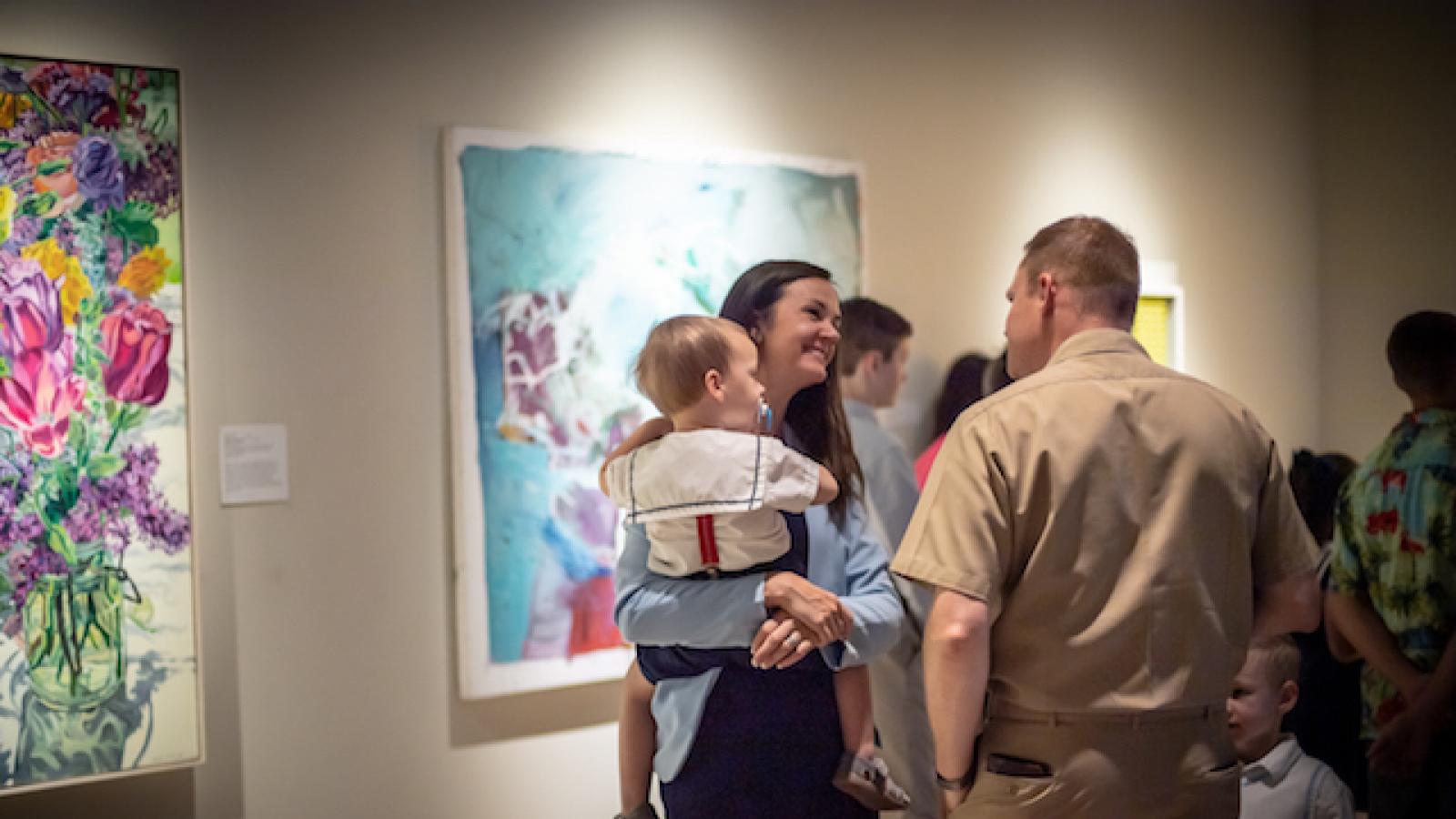How Blue Star Museums is Making A Difference: One Military Family's Story

In the Cummer Museum of Art & Gardens in Jacksonville, Florida, Rachel Snyder and her children wander around the Stein Gallery taking in the artwork. She and her family have been here before, but this time they are helping to celebrate the 10th summer of the National Endowment for the Arts’ Blue Star Museums national initiative. Rachel's husband, Lieutenant Commander Joe Snyder, currently stationed at Naval Air Station Jacksonville, has come to the museum event, too. As an active-duty military family, the Snyders are very familiar with changing stations, having moved five times since 2005. They are also familiar with Blue Star Museums, having visited the Chrysler Museum when they lived in Norfolk, Virginia, and the Saint Augustine Lighthouse in Jacksonville. With a move next year to Whidbey Island, Washington, Rachel Snyder has already scouted out the Blue Star Museums in Seattle. We spoke with her about how the program has fit into and impacted her family.
NEA: We hear from military families about the bonding experiences made possible through Blue Star Museums. Can you tell me about that?
RACHEL SNYDER: The opportunities presented for military families to have bonding experiences at Blue Star Museums are unique. The program truly enhances quality time before deployments and during the sensitive reintegration period It also helps fill time during deployments and aids in adapting to new duty stations!
Moving to a new area means starting from scratch. The transition usually includes living a tourist lifestyle while adapting to a new house and school and finding new friends. A significant aspect of living in many different places is that military kids usually don't have a hometown so they are not able to define themselves by a particular city or region. Every duty station has a rich heritage that is presented in their local museums. This would not be possible without generous benefactors that preserve the history of their community. Their passion keeps the museums alive for next generations including transient military kids, which is a true treasure.
Additionally, most military families do not live close to relatives. Traveling to visit grandparents, cousins, or other Navy friends comes at a great cost. However, knowing a Blue Star Museum may be along the way offers a new element of discovery. The museum also creates opportunities to expand vacation options with thousands of locations across the country.
The Blue Star Museums program minimizes the pressure a family may feel when visiting a museum. Since financial expense is not a factor, it lowers expectations for each trip in a positive way! If we only get to spend a short time in a certain gallery or exhibit, we can always return. If we go to a museum during deployment and love it, we can go back again.
NEA: What do you think your kids get out of the Blue Star Museums program?
SNYDER: At museums, I encourage our kids to learn as much as they can about the area we are living and themselves! Find a painting they like and define why it talks to them. Discover something engaging like a historical document, an event description, or biography and ponder how it enriches their present life. Helping the kids understand that the arts can take them out of themselves and engage in wonder is vital. This is a top priority for us as parents in a technology-consumed society and Blue Star Museums are a magnificent resource.
Our children are a range of ages and all of them have been fulfilled by Blue Star Museums. Noah is 13 and loves anything about history. Charlotte is 10 and likes historic artifacts and seeing tangible connections to the past. She also loves art connected to ballet and adores anything French, especially paintings. Lucy is nine and likes abstract art and discovering things in paintings. Elizabeth is our seven-year-old and loves gardens and beautiful, colorful paintings. Joseph is four and likes anything interactive where he can move and be physically involved. Jude is two and likes anything he can touch. All of the kids especially love hands-on exhibits!
NEA: You mentioned that having access to museums via the Blue Star Museums program helps with reintegration after a deployment. Can you say more about that?
SNYDER: Military life phases are dynamic and there is an emotional cycle before, during, and long after deployment. Homecoming is a moment, but reintegration is a process.
After deployments, going on outings together like visiting a Blue Star Museum enables families to reconnect and regain balance. It offers experiences to grow together and communicate. The simple sense of belonging to a larger community through visiting a museum eases [the challenges that come] post-deployment.
NEA: What is special about a museum experience that's different from other activities like going to movies?
SNYDER: It is extremely special for children that have gone through moves and deployment to be enriched by fine art, inspired by historical figures, and fascinated by artifacts. The mental and emotionally engaging factors of a museum experience cannot be touched by other leisure activities. Respect for historical and artistic treasures will always be cherished. There are significant yet simple social manners children are naturally infused with by a museum experience. True admiration, a sense of awe, and reverence are real and common at museums. Military kids define themselves with a collaborative history of the places they've lived and Blue Star Museums enriches this definition.
This summer we're celebrating the 10th year of Blue Star Museums, a collaboration among the National Endowment for the Arts, Blue Star Families, the Department of Defense, and museums across America. From Armed Forces Day to Labor Day, the Cummer Museum of Art and Gardens is one of more than 2,000+ institutions that will open its doors for free to active-duty military personnel and their families. Find more information and a list of participating museums across the country here.




